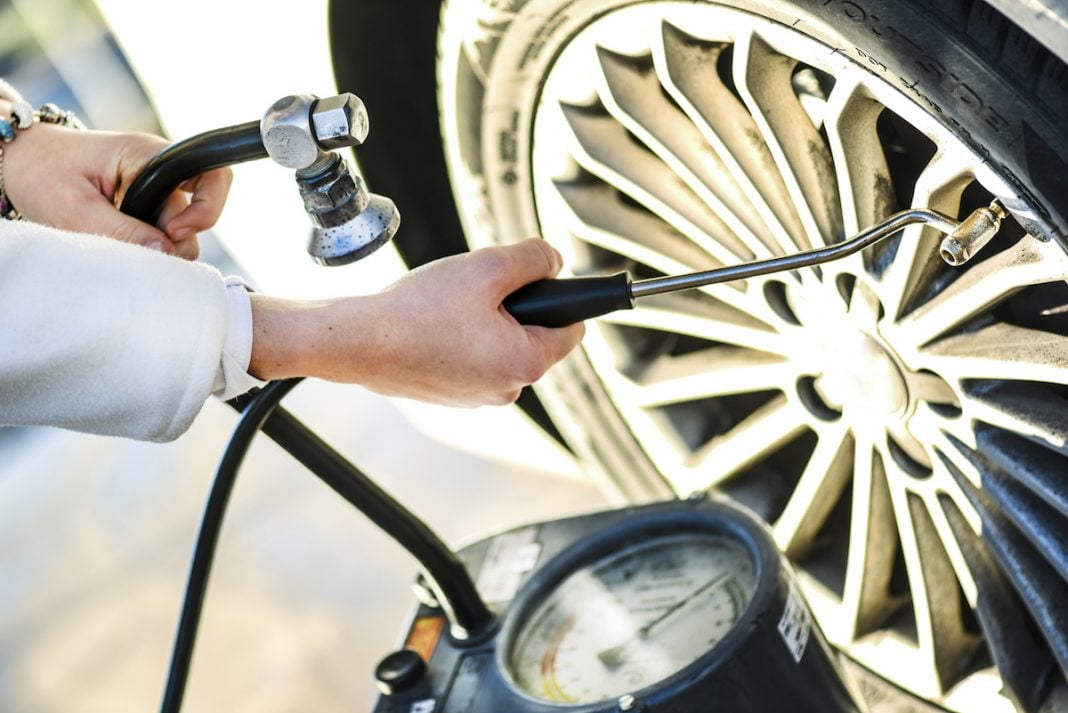Nitrogen-filled tires used to be something you’d only see in Formula 1 racing. Teams used pure nitrogen to fill their tires because it apparently gave them a significant boost in both performance and reliability. Is that the case, though? Here, we’re looking at the difference between filling tires with nitrogen and filling them with regular air.
Is Nitrogen Air Better and Why?
The air we breathe daily is already 78 percent nitrogen, so why should we ever spend extra money at an auto shop to fill our tires with pure nitrogen? This is the question that most skeptics ask when wondering about how much difference pure nitrogen could make.
Oxygen Molecule Size
The 21 percent of oxygen in the air is where supporters of nitrogen say the key difference is found, as well as the main benefit of nitrogen. Oxygen molecules are smaller than those of nitrogen. In fact, they’re small enough even to permeate the tire wall and escape. It is for this reason that tire pressure (measured in psi) will go down somewhat over time, even when there is no puncture or other damage to the tire wall.
Oxygen molecules are smaller than those of nitrogen. In fact, they’re small enough even to permeate the tire wall and escape.
You can see this for yourself by measuring the quantity of oxygen in newer tires and older ones. The latter will always have less oxygen than newer tires, even without damage. Nitrogen-filled tires retain pressure far better because the molecules are too large to escape similarly.

Removal of Water Vapour
Water vapour only makes up about 1 percent of regular air, but it can still be a problem. It’s more severe for F1 drivers, where tires get heated to very high temperatures, but the same effect can happen on regular cars, when the tires heat, the water vapour and increased pressure in the tire can create instability in traction.
Using nitrogen eliminates any water vapour content, which in turn allows you to know what pressure the tires will be at all times.
Does Nitrogen Benefit Ordinary Cars?
Experiments done on nitrogen- and air-filled tires from a typical filling station have been tested before in programs like the popular UK auto TV show, “Fifth Gear.” They experimented (in this YouTube video) to show what happens to the two kinds of tires when subjected to a high temperature of 80 degrees Celsius (176 degrees Fahrenheit).
Surprisingly, the air-filled tires only showed an increase in 8.8 psi, whereas the nitrogen-filled tires increased by 10.3 psi. This suggests that outside of the more scientific confines of the Formula 1 team, it’s hard for nitrogen filling stations to be sure that your tire is free of water vapour and other elements of regular air.
When done under proper conditions and with a guarantee of purity of nitrogen within your tires, there are benefits. No F1 team would waste resources on useless practices, so we can be confident that the reasoning behind nitrogen is sound.
Currently, some issues are guaranteeing at the consumer level that nitrogen can be pumped into your tires to leave them 100 percent filled with nitrogen. As long as there is even a tiny amount of oxygen or water vapour, then the beneficial effect won’t materialize.


